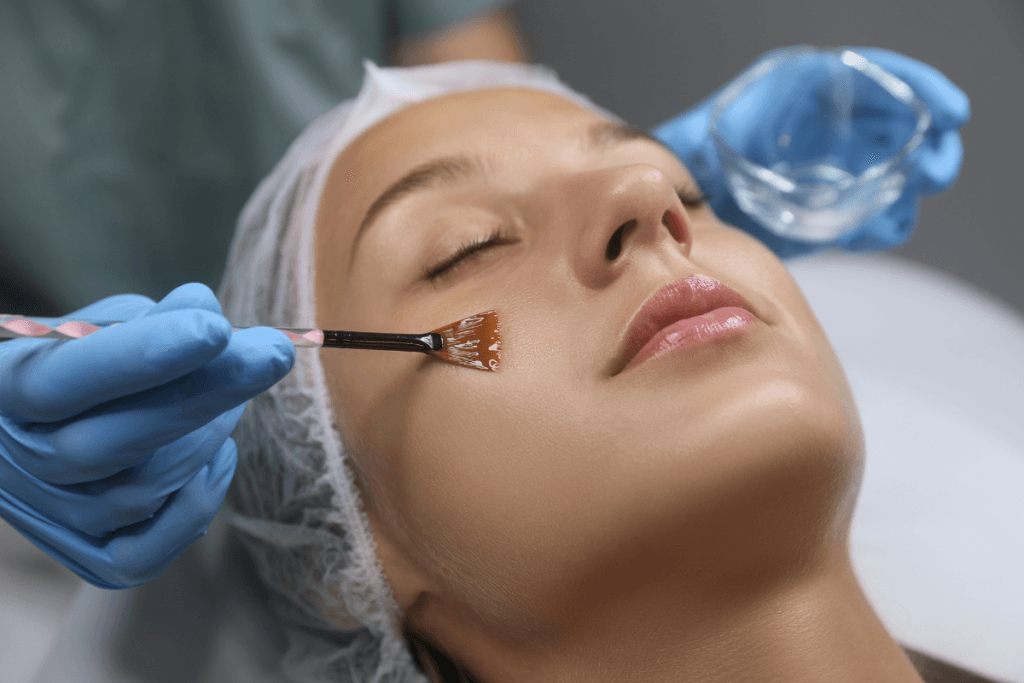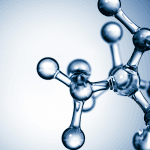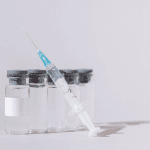Hyperpigmentation is a high-friction complaint in aesthetics and medical dermatology. Patients often arrive with strong expectations from social media photos. A chemical peel for hyperpigmentation can be part of a broader plan, but outcomes depend on diagnosis, skin type, and aftercare adherence.
This guide is written for licensed healthcare teams. It focuses on operational decisions, risk controls, and documentation. It also helps you translate popular searches into clinically useful questions.
Key Takeaways
- Confirm the pigment diagnosis before selecting peel depth.
- Standardize photos and timelines to reduce “before/after” confusion.
- Plan proactively for post-inflammatory hyperpigmentation risk in darker skin tones.
- Set expectations about recurrence, maintenance, and sun exposure.
- Align procurement with traceability and professional-use documentation.
Hyperpigmentation Basics: What You’re Treating and Why
“Hyperpigmentation” is an umbrella term, not a single condition. It can reflect melasma, post-inflammatory hyperpigmentation (PIH), lentigines (sun spots), drug-related discoloration, or pigment changes after procedures. The same patient may have more than one driver. That matters because different pigment patterns respond differently to exfoliation and skin-turnover approaches.
At a high level, chemical peels create controlled keratolysis (shedding of outer layers) and epidermal renewal. Superficial peels mainly affect the epidermis, where much visible pigment can reside. Deeper injury can reach dermal interfaces, which may increase risk and downtime. When clinicians discuss a chemical peel for hyperpigmentation, the real decision is often about balancing modest improvement with predictable healing and low PIH risk.
Melasma deserves special mention. It is often chronic and relapse-prone. Even when pigment lightens, triggers like UV, visible light, heat, and hormonal shifts can re-darken areas. In clinic conversations, this is where “does it work permanently” misunderstandings begin. Your intake process should identify triggers, prior topical regimens, and any recent inflammation.
MedWholesaleSupplies supports purchasing for licensed clinics and healthcare professionals only.
Why it matters: A correct pigment diagnosis prevents avoidable irritation and rebound discoloration.
Selecting a chemical peel for hyperpigmentation in clinic
Patients frequently ask for the “best peel,” but “best” is context-specific. Start with a structured selection process that connects the pigment pattern to a risk profile. Consider Fitzpatrick skin type, history of PIH, current retinoid use, and tolerance for downtime. Also note the anatomic site. Facial skin can behave differently than the neck, chest, or legs, where healing may be slower and friction is common.
Procurement teams also need a practical framework. Product labeling, intended professional use, and traceability affect what you can stock and how you can document it. If you maintain a peel menu, define which scenarios are in-scope for your setting and which require referral or a different modality.
How to compare peel approaches (operational view)
Many clinics end up comparing superficial exfoliating systems, pigment-focused protocols, and “no-peel” biostimulating options. The table below is not a treatment directive. It is a way to standardize how your team discusses options, consent language, and follow-up needs across providers.
| Decision factor | What to clarify | Operational note |
|---|---|---|
| Primary pigment type | Melasma vs PIH vs sun spots | Use consistent intake terms across providers. |
| Skin tone risk | History of PIH, Fitzpatrick IV–VI | Build conservative pathways and longer follow-up. |
| Downtime tolerance | Flaking, erythema, visibility at work | Set photo schedule around expected healing phases. |
| Body vs face site | Legs, chest, hands vs face | Body sites may need different friction controls. |
| Adjunct plan | Barrier support and UV/visible light control | Document the non-procedure components in notes. |
When you review product families, keep the discussion high-level and protocol-based. If your team uses branded depigmenting systems, ensure staff can explain what is procedure-based versus what is home-care maintenance. For deeper reading, you can cross-reference general peel concepts in Peeling Back The Years and browse your formulary options under Peels And Masks Products.
Before-and-After Expectations: Photos, Timing, and Language
“Before and after” content is often the source of dissatisfaction, even when pigment improves. Lighting, angles, and camera settings can change apparent contrast more than the peel itself. That problem is magnified in darker skin tones, where glare, hotspots, and underexposure distort tone. A standardized photo protocol protects the clinic and helps patients understand gradual change.
Build a repeatable workflow for baseline, interim, and follow-up images. Use the same camera, room, distance, and background. Record whether the patient has makeup, tinted sunscreen, or self-tanner. If your clinic discusses chemical peel before and after outcomes, define what “after” means in your charting language. For example, document that healing can include transient redness, dryness, and textural change that may temporarily highlight pigment boundaries.
Clinic photo checklist (practical, non-clinical)
- Fixed lighting setup
- Same lens and distance
- Neutral background
- Front and oblique angles
- Makeup and sunscreen noted
- Dates tied to visits
- Consent stored consistently
Patients also search for “chemical peel cost,” which often reflects uncertainty about the number of visits, adjunct products, and follow-up needs. Rather than quoting numbers in educational materials, explain cost drivers operationally: peel category, provider time, pre-visit prep, post-visit products, and the likelihood of multiple sessions. That framing helps keep conversations compliant and reduces surprise billing concerns.
To help staff answer common “what will I look like” questions, consider curating educational examples from reputable manufacturer education or your own consent library. If you want additional context on what people mean by “chemical peel before and after” content online, your team may also find it useful to review Biorepeel Before And After as an example of how results are commonly presented.
Managing Risk When Skin Looks Worse After a Peel
It is common for patients to report that their skin looks worse after chemical peel treatment. Often, they are noticing expected erythema, dryness, temporary darkening of superficial pigment, or sharper contrast as surrounding skin desquamates. That said, your clinic should treat “worse” as a triage word. It can also signal irritant dermatitis, infection, allergic contact reactions, or evolving PIH, especially in higher Fitzpatrick types.
Create a consistent post-procedure instruction set and escalation pathway. Staff should know what the clinic considers routine healing versus concerning symptoms. Documentation matters here. Record the product used, contact time per protocol, prep steps, and any immediate reactions. If you use combination regimens (for example, peel plus depigmenting home care), note start dates and what was paused.
- Expected healing described
- Red-flag symptoms listed
- Contact channel documented
- Follow-up intervals defined
- Sun/heat exposure reviewed
Risk conversations should also explicitly address darker skin tones. Searches like “chemical peel before and after black skin” and “chemical peel before and after indian skin” often reflect a fear of PIH or scarring. Your consent language should acknowledge that pigment rebound is possible in any skin tone, and that the risk profile can change with inflammation, picking, or unprotected UV exposure.
Inventory at MedWholesaleSupplies is positioned as authentic, brand-name product intended for professional use.
Quick tip: Use the same “normal healing” script across staff to avoid mixed messages.
At-Home Peels vs Professional Treatments: Setting Boundaries
Patients increasingly ask about the best chemical peel at-home options, including “chemical peeling at home naturally.” Clinics benefit from having a neutral, safety-forward response that does not read as dismissive. “Natural” is not a safety category. Many at-home products still contain active acids, and irritation can be amplified by layered actives, occlusives, or improper frequency.
When you discuss a chemical peel for hyperpigmentation at home, focus on boundaries and escalation. Explain that unsupervised irritation can trigger PIH and prolong discoloration. Reinforce that the clinic’s role is to confirm diagnosis, assess risk factors, and select an approach that fits the patient’s history. For higher-risk cases (melasma, prior PIH, darker skin tones, or recent inflammation), the safest message is often that professional assessment is needed before any aggressive exfoliation.
Professional workflows also let you coordinate supportive care, photo documentation, and follow-up. Some clinics incorporate non-desquamating options in their pathway for patients who cannot tolerate visible peeling. If your clinicians are comparing those categories, it may help to review PRX-T33 Treatment Overview and broader category education under Peels And Masks Articles.
From a counseling standpoint, address “best peel for hyperpigmentation on dark skin” as a process question, not a product question. The best approach is usually the one with predictable healing, conservative escalation, and strict trigger control. Make sure staff avoid absolute claims, especially around permanence or “one treatment” expectations.
Where Peels Fit for Aging Skin, Wrinkles, and Sun Damage
Many hyperpigmentation consults are actually mixed-indication visits. Patients may mention rough texture, fine lines, and sun damage in the same sentence. Online, that shows up as searches for chemical peel before and after wrinkles or chemical peel before and after sun damage. Clinically, this is a cue to clarify priorities. A peel chosen primarily for texture is not always the best fit for pigment risk, and vice versa.
Discuss aging-skin goals in plain language. Explain that peels can support smoother texture and a more even-looking tone by accelerating surface turnover. Also emphasize that pigment drivers often require ongoing prevention, especially sun protection and trigger avoidance. For sun-related discoloration on hands, chest, or legs, factor in friction, clothing contact, and slower turnover compared with the face.
For teams refining their educational materials, you can point clinicians to background reading on adjunct skincare categories that commonly surround peel plans. For example, Antioxidants And Skincare provides context for why supportive routines are often discussed alongside in-clinic procedures.
When patients ask whether a peel “removes” pigment permanently, keep the language conservative. Some epidermal pigment can fade, but recurrence is possible when triggers persist. Your documentation should reflect that maintenance and prevention are part of the overall plan, particularly for melasma and PIH-prone patients.
Procurement and Documentation: Keeping Your Peel Program Audit-Ready
A peel program is not just a clinical choice. It is also a sourcing and documentation system. Keep a central list of stocked peel products, intended use categories, and any internal training requirements. Record lot numbers and expiry dates when applicable. Store product per manufacturer instructions, and keep policies consistent across sites. If you are operating under US distribution constraints, confirm that your receiving process includes verification steps that match your compliance obligations.
For procurement teams, “best professional chemical peels” usually means reliability, traceability, and consistent documentation. In practice, this can be more important than chasing a single hero product. When you browse options such as PRX-T33 WIQO Vials, Mesoestetic Cosmelan, Filorga Light Peel, or Retises CT Yellow Peel, keep internal notes focused on training, consent language, and follow-up needs rather than marketing claims.
- Licensure verification filed
- Lot and expiry recorded
- Storage conditions documented
- IFU access maintained
- Adverse event pathway
MedWholesaleSupplies states products are sourced through vetted distribution partners for traceability.
Finally, build a consistent library of patient-facing instructions and staff scripts. This reduces variation in how “chemical peel for hyperpigmentation before and after” expectations are described across providers. It also helps when you onboard new clinicians or expand service lines.
For additional product-family education, your clinicians may benefit from reading Benefits Of Azelac RU and Biorepeelcl3 Next Generation to understand how different systems are commonly positioned.
Authoritative Sources
Keep your counseling and consent language aligned with reputable dermatology references. Avoid borrowing claims from social media imagery, which often lacks standardized lighting, timing, or disclosure of adjunct treatments. When in doubt, default to conservative, safety-forward phrasing and document what you observed.
The links below provide high-level safety and expectation context. They are useful for staff education and for aligning patient handouts with mainstream dermatology guidance.
- American Academy of Dermatology: Chemical Peels
- DermNet NZ: Chemical Peels
- DermNet NZ: Post-Inflammatory Hyperpigmentation
Further reading: standardize intake, photos, and follow-up first. Then refine your peel menu, training, and documentation so outcomes are easier to interpret across providers.
This content is for informational purposes only and is not a substitute for professional medical advice.







